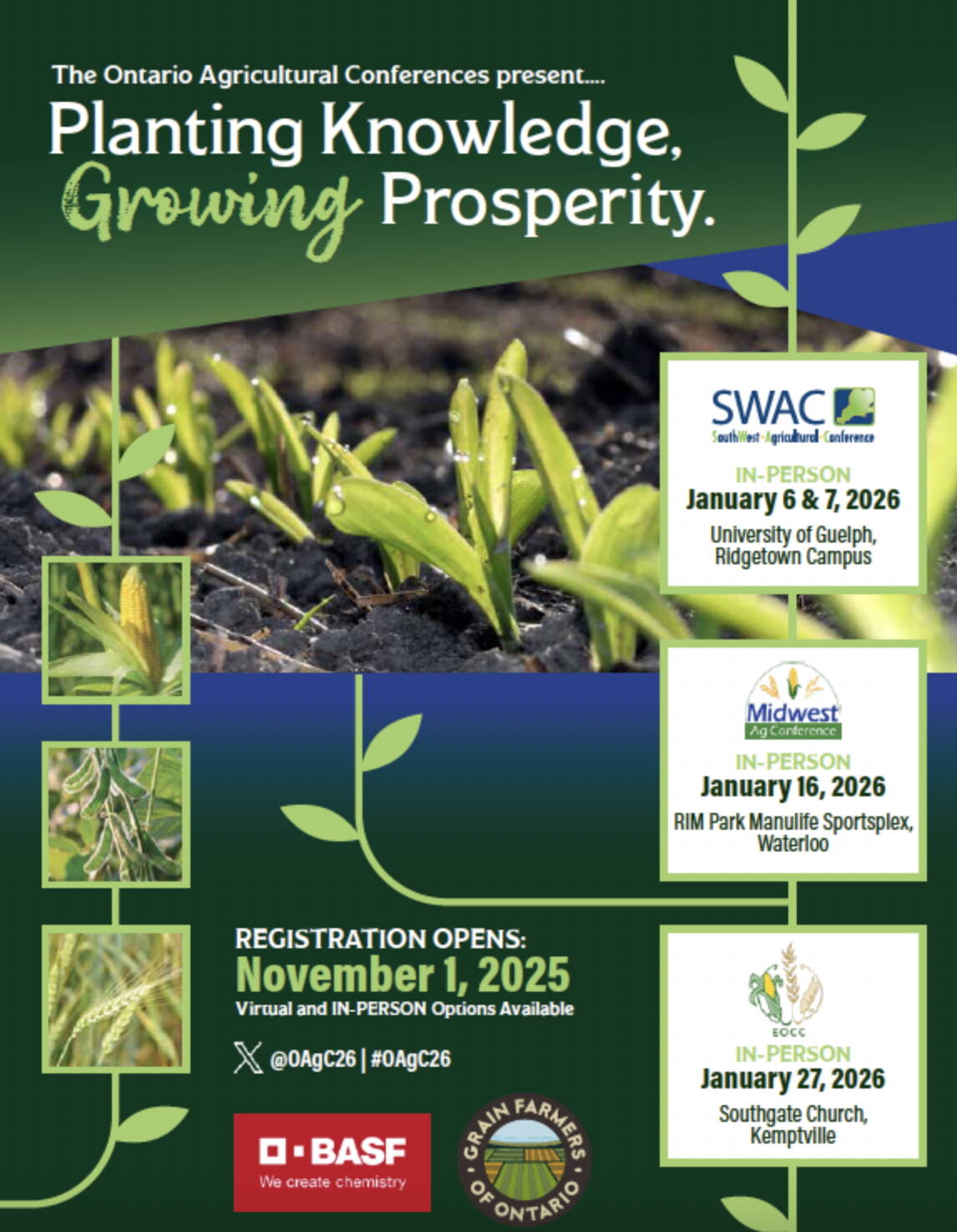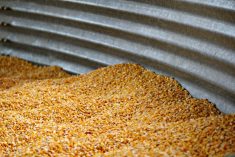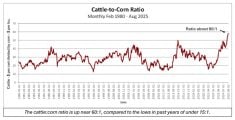Ontario corn prices slowly percolated higher throughout January. Farmer selling eased but commercial traders had sufficient ownership to cover nearby commitments, which tempered the upside. Soybean prices are marginally higher compared to the first week of January. Export demand during the month was stronger than anticipated and commercial supplies are decreasing. The market needs to pull stocks from farmers.
Ontario wheat prices have been flat over the past month. Ontario domestic wheat prices are premium to world values, limiting offshore movement. Statistics Canada will release its Dec. 31 stocks report on Feb. 7. These reports are important because they confirm the production estimate. For corn and wheat, these reports also provide an estimate for domestic feed usage.
Quick look
Soybeans: As Brazil’s harvest looms closer, pressure will increase on the world market.
Corn: U.S. ending stocks are lower than expected.
Wheat: Major importers are buying larger volumes from Russia due to fear over lack of Black Sea exports in April.
Read Also

Registration open for Ontario Agricultural Conference
The Ontario Agricultural Conference 2026 offers in-person and online access to expert insights, hands-on learning, and networking opportunities.
The USDA released its final 2022 production estimates along with its updated World Agriculture Supply and Demand Estimates numbers on Jan. 12. U.S. corn and soybean production came in lower than expected and the fundamentals for the row crop are historically tight. Brazil’s soybean harvest is in the early stages and production could be a record high.
Planting of Brazil’s second corn crop is off to a slow start due to wet conditions. As of Jan. 22, Argentine farmers had planted 92 per cent of the intended soybean acres and 88 per cent of the corn area. At this stage, Argentine crop conditions are the worst on record but the country is now receiving timely rains.
Russia continues to dominate the wheat trade in the Middle East and Africa. Australian origin is saturating southeast Asian demand after harvesting a record crop. Kansas received snow in January but the crop remains vulnerable to winter kill. According to the USDA, U.S. farmers increased hard red winter and soft red winter wheat acreage last fall, which surprised the trade.
The Canadian dollar is expected to strengthen in February and March. Interest rate hikes from the Bank of Canada and the U.S. Federal Reserve will likely end during the first quarter of 2023. The International Energy Agency expects crude oil demand to reach a record high in 2023, largely due to the reopening of China.
[RELATED] China top destination for Canadian grains, oilseeds
China’s economic output is expected to surge in 2023, driving demand for all commodities. Interest rate stability and stronger resource demand will result in Canadian dollar appreciation against the U.S. greenback.
Soybeans
Ontario on-farm soybean stocks as of Dec. 31, 2022, are expected to come in at 1.010 million tonnes, down 130,000 tonnes from the previous year’s stocks of 1.140 million tonnes. Bids from the domestic crusher are higher than elevator bids and reflect a small premium to world values. Elevator companies are well covered for nearby export commitments in the short term. Ontario export demand will halt later in spring and summer. Brazil will dominate the world market as harvest progresses.
Soybean offers from Brazil were quoted at US$575/tonne f.o.b. Paranagua, down $10/tonne from 14 days earlier. U.S. offers were $600/tonne f.o.b. the Gulf, unchanged from earlier in January. North America is losing the competitive edge as the Brazilian harvest moves into high gear.
As of Jan. 22, the Brazilian soybean harvest was three per cent complete. Early yield reports are better than expected. The USDA estimated Brazilian production at 153 million tonnes but trade estimates are in the range of 154 to as high as 156 million tonnes. This is up from last year’s crop size of 129.50 million tonnes. Argentine output is expected to be in the range of 44-46 million tonnes, which compares to the 2021 output of 43.9 million tonnes.
The USDA’s final production estimate had the U.S. crop at 116.4 million tonnes, down from the 2021 crop of 121.5 million tonnes. The 2022-23 U.S. soybean carryout is now estimated at 5.7 million tonnes, down from the 2021-22 ending stocks of 7.5 million tonnes and down from the five-year average of 13.1 million tonnes. Keep in mind the Brazilian carryout will be sharply above the five-year average. The U.S. market is functioning to ration demand by trading above world values and attracting imports from Canada.
[RELATED] CBOT weekly outlook: Weather outweighs U.S. Fed rate hike announcement
What to do: We’ve advised producers to be 80 per cent sold on their 2022 production. The world market will come under pressure as Brazil’s harvest advances. U.S. offshore movement will slow.
Corn
Ontario on-farm stocks as of Dec. 31, 2022, are expected to come in at five million tonnes while commercial stocks are forecasted at 3.1 million tonnes. Elevator companies are well covered for nearby sales requirements. Commercial stocks will tighten in April and May. This is when cattle on feed numbers are at seasonal highs and offshore movement increases. Basis levels are expected to appreciate as the market functions to attract farmer selling.
U.S. corn is now more competitive than Brazilian origin on the world market. The corn market does not come under pressure in January and February like the soybean market. Brazil’s main second corn crop, which composes the bulk of the exportable surplus, is only harvested in June. The U.S. will be the main supplier to the world market until May.
Seasonally strong export demand for North American corn comes on the heels of a lower U.S. production estimate. The USDA’s final production estimate came in at 348.8 million tonnes, down from the 2021 output of 382.9 million tonnes. Given lower production, U.S. ending stocks are now expected to come in at 31.5 million tonnes, down from the 2021-22 carryout of 35 million tonnes and down from the five-year average of 45.2 million tonnes.
The U.S. corn market needs to encourage acreage this spring and the market will be extremely sensitive to growing conditions. The spring rally will occur when domestic and export demand is at a seasonal high.
The USDA is expecting Brazilian production to reach 125 million tonnes, up nine million tonnes from last year. It’s important to remember that Brazil’s first corn crop of 25 million tonnes is in the early harvest stages. Farmers have only started planting the main second crop, which has potential to reach 100 million. The later planting period for the second crop makes it vulnerable to drier conditions in May and June. The market cannot afford a crop problem in Brazil.
What to do: We have advised producers to be 50 per cent sold on their 2022 corn production. Be patient to make additional sales. Be prepared to be aggressive on sales during April and May. We need to sell the bulk of the remaining supplies before Brazil’s main harvest period, which occurs in June.
Wheat
Ontario wheat prices were relatively flat throughout January and we’re not expecting much market action during February. We consider these two months the calm before the storm. Domestic millers have their requirements covered through March or April. Export demand for Ontario wheat has come to a standstill in the short term.
To reiterate from the previous issue, Ontario on-farm stocks as of Dec. 31 are expected to come in at 350,000 tonnes. The domestic market will need to pull supplies from farmers during April and May. This will cause basis appreciation during spring.
Russia continues to set the stage on the world market with aggressive offers to the Middle East and Africa. Several insurance companies have cooperated to share the risk on vessels out of the Black Sea, which has made insurance a non-issue.
Media reports suggest Russia is gearing up for a major offensive during April. We find that major importers are buying larger volumes from Russia because there is a fear that Black Sea exports will halt during spring. Russia had a record crop of 100 million tonnes, which was up 25 million tonnes from the 2021 output.
Australia’s wheat crop reached a record 36.4 million tonnes, according to the USDA, up from last year’s output of 32 million tonnes. There were quality issues along the East Coast due to excessive rain but Victoria, South Australia and West Australia experienced normal harvest conditions.
The wheat market will come under pressure in June and July. U.S. farmers planted 7.9 million acres of soft red winter wheat this past fall, up from the previous year’s planted area of 6.6 million acres. U.S. hard red winter wheat acreage came in at 25.3 million acres, up 2.1 million acres from last year. We are looking for a year-over-year increase in U.S. wheat production.
What to do: We have advised producers to be 40 per cent sold on the 2022 wheat production. The surge in Russian exports and Australian harvest pressure will end later in March. The U.S. Southern Plains has received snow but additional moisture will be needed when the crop comes out of dormancy. We are still expecting a rally in the wheat market during March and early April, at which time we will be aggressive with sales recommendations. The speculative money has a historically large short position in Chicago wheat so the market is ripe for a major short covering rally.















